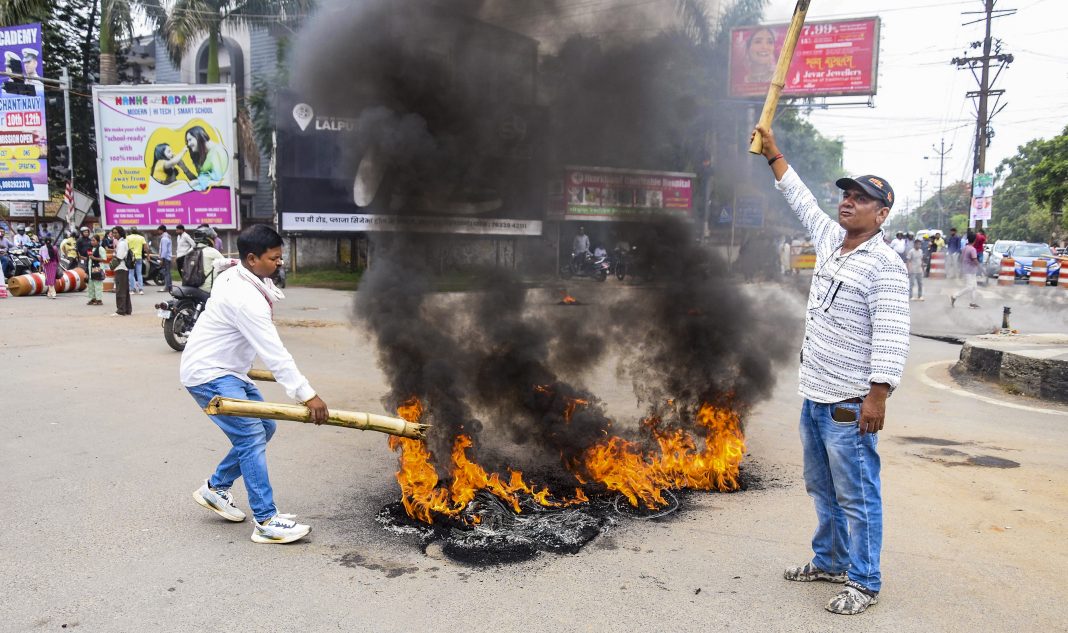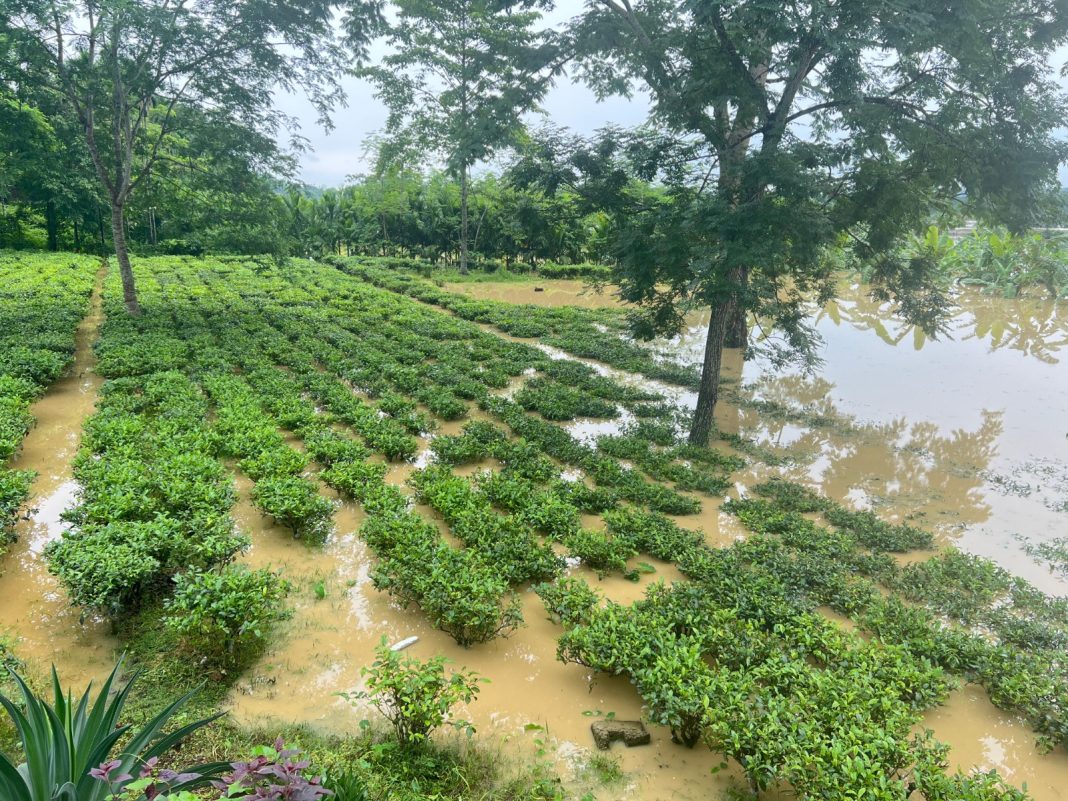By Satyabrat Borah
The state of Assam, nestled in the northeastern corner of India, is no stranger to the annual deluge brought by the monsoon season. However, the recent flooding caused by the overflow of the Brahmaputra River has once again underscored the region’s vulnerability to natural disasters, leaving a trail of devastation across 12 districts. As of June 2025, the Assam State Disaster Management Authority (ASDMA) reported that heavy rainfall has triggered widespread flooding, submerging 175 villages, claiming eight lives, and affecting over 58,000 people. The rising waters of the Brahmaputra, coupled with landslides in some areas, have disrupted lives, damaged infrastructure, and highlighted the ongoing challenges of flood management in one of India’s most flood-prone regions.
The Brahmaputra River, one of the largest and most powerful rivers in the world, originates in the Tibetan Plateau and flows through Arunachal Pradesh and Assam before emptying into the Bay of Bengal. Fed by more than 50 tributaries and swelled by monsoon rains and glacial melt, the river is both a lifeline and a recurring threat to Assam’s ecology and economy. Its unpredictable nature and high sediment load make it particularly prone to flooding, especially during the monsoon months of June and July, when rainfall averages around 2,900 mm in the region. The current flooding, exacerbated by incessant rainfall in Assam and neighboring states like Arunachal Pradesh, has pushed the Brahmaputra and its tributaries, such as the Kopili, above their danger levels, leading to severe inundation across low-lying areas.
The impact of the floods has been profound, with 12 districts including Dhemaji, South Salmara, Lakhimpur, Dibrugarh, Golaghat, Darrang, Nagaon, Karbi Anglong, Kamrup, Biswanath, Tinsukia, and Karbi Anglong West bearing the brunt of the disaster. According to the ASDMA, 175 villages have been submerged, with homes and agricultural fields underwater, disrupting the livelihoods of thousands. The human toll is heartbreaking: three deaths have been attributed directly to the floods, with two people, including a child, drowning in Golaghat district and another in Lakhimpur. Additionally, five fatalities and two injuries have been reported due to landslides in the Kamrup (Metro) district, where heavy rainfall has destabilized hilly terrains. These numbers, while stark, are part of a broader pattern of loss in Assam, where floods have claimed hundreds of lives over the past decade, with 838 deaths recorded between 2013 and 2022 alone.
The scale of the disaster extends beyond human casualties. The ASDMA reports that 194 animals have been washed away, and 75,918 livestock have been affected, a significant blow to Assam’s agrarian economy, where many households depend on farming and animal husbandry for their sustenance. Infrastructure damage is equally severe, with 22 roads, one bridge, and multiple embankments damaged, alongside irrigation canals, school buildings, and Anganwadi centers. Urban areas, particularly in Dibrugarh and Guwahati, have faced severe waterlogging, affecting 9,865 people across Kamrup, Dibrugarh, Darrang, Cachar, and Kamrup (Metro) districts. The Brahmaputra’s high water levels in Dibrugarh and the heavy rainfall in Guwahati have compounded the crisis, disrupting daily life and straining local resources.
Rescue and relief operations are in full swing, with the State Disaster Response Force (SDRF), National Disaster Response Force (NDRF), Fire and Emergency Services, and local administration working tirelessly to assist affected communities. The authorities have established 16 relief facilities to provide shelter, food, and medical aid to those displaced by the floods. However, the scale of the disaster poses significant challenges, particularly in low-lying areas of Dibrugarh, where homes and fields remain submerged. The Central Water Commission (CWC) has issued an “orange bulletin” for Assam, signaling a severe flood scenario, with the Brahmaputra flowing above the danger level at key locations like Dibrugarh and Nematighat in Jorhat. Other rivers, including the Kopili at Kampur in Nagaon, have also breached danger levels, further complicating rescue efforts.
Assam’s flood crisis is not a new phenomenon. The state has experienced at least 12 major floods since 1950, with the frequency and intensity of these events increasing in recent decades. The 1950 Assam-Tibet earthquake, also known as the Great Earthquake, altered the Brahmaputra’s course and exacerbated its propensity for flooding by increasing sedimentation and reducing the river’s water-carrying capacity. Human interventions, such as deforestation, encroachments on floodplains, and the construction of embankments, have further aggravated the problem. While embankments were initially built to control flooding, many of the 423 structures along the Brahmaputra and its tributaries are now outdated, with 295 having outlived their intended lifespan. Breaches in these embankments, often caused by bank erosion, have become a recurring issue, allowing floodwaters to inundate new areas and cause widespread destruction.
The economic impact of the floods is staggering. Over the past seven decades, flood-related damages in Assam have increased 120-fold, with annual losses averaging around 9.31 lakh hectares of land. The current floods have submerged agricultural fields, threatening the livelihoods of farmers who rely on crops for their income. The loss of livestock further compounds the economic distress, particularly in rural areas where alternative sources of income are limited. Bank erosion, another persistent problem, has eroded over 4.27 lakh hectares of land since 1950, reducing the availability of fertile agricultural land and forcing communities to relocate. The Brahmaputra’s width has increased to as much as 15 kilometers in some areas due to this erosion, reshaping the region’s geography and displacing thousands.
The role of climate change in exacerbating Assam’s floods cannot be ignored. Experts like Dr. Partha J. Das, head of climate and water hazards at Aaranyak, have noted that global warming intensifies monsoon rainfall, leading to more extreme weather events. The melting of glaciers in the Tibetan Plateau, combined with heavy rainfall in Arunachal Pradesh and Bhutan, contributes to the Brahmaputra’s swelling waters. Flash floods, caused by cloudbursts in neighboring states, have become increasingly common, catching communities off guard and overwhelming existing flood management systems. The unpredictability of these events, coupled with the state’s unique topography characterized by a steep drop in elevation as the Brahmaputra enters Assam makes long-term flood mitigation a daunting challenge.
Despite these challenges, efforts to address Assam’s flood crisis have been ongoing. The ASDMA, in collaboration with organizations like CivicDataLab, has developed data models to improve flood preparedness and response. In 2023, the state introduced a “green budget” allocating funds for climate change action and disaster risk reduction. The National Hydrology Project, launched in 2016, aims to enhance flood forecasting through real-time hydro-meteorological data, while the Flood Management and Border Areas Programme focuses on reducing sediment loads in rivers to improve their carrying capacity. Proposals for flood plain zoning and flood-proofing vulnerable settlements have also been put forward, though implementation remains a hurdle due to resource constraints and the need for coordination between state and central governments.
However, these measures have often fallen short of addressing the root causes of Assam’s flooding. The state’s reliance on short-term solutions, such as embankment repairs and relief distribution, has been criticized for lacking a long-term vision. Many flood control structures, built decades ago, are in disrepair, and the absence of comprehensive flood mitigation strategies has left communities vulnerable to recurring disasters. The Brahmaputra Board’s 1982 master plan, which recommended building dams and reservoirs, was met with opposition, leading to the suspension of several projects. Instead, successive governments have focused on temporary measures, perpetuating a cycle of destruction and recovery that fails to address the underlying issues.
The human cost of this cycle is evident in the stories of those affected by the current floods. In Golaghat, the loss of a child to the floodwaters has left a community in mourning, while in Lakhimpur, families are grappling with the destruction of their homes and livelihoods. In Kamrup (Metro), landslides have added to the sense of fear and uncertainty, with residents wary of further rainfall. The state’s Chief Minister, Himanta Biswa Sarma, has described the situation as critical, noting that the coming days could bring more challenges if rainfall persists. Union Home Minister Amit Shah has assured central government support, but the immediate focus remains on rescue and relief operations to assist those in need.
The resilience of Assam’s people is remarkable, as communities come together to build makeshift barriers with sandbags and seek shelter in relief camps. However, the recurring nature of these floods underscores the urgent need for sustainable solutions. Modernizing early warning systems, investing in resilient infrastructure, and regulating land use in flood-prone areas are critical steps toward reducing the impact of future floods. Collaborative efforts between state and central governments, along with community-driven initiatives, could pave the way for a more flood-resilient Assam.
As the Brahmaputra continues to rage, the people of Assam face an uncertain future. The floods of 2025 are a stark reminder of the state’s ongoing battle with nature’s fury, compounded by human interventions and climate change. While immediate relief efforts are essential, the long-term challenge lies in breaking the cycle of destruction and rebuilding a state that can withstand the Brahmaputra’s wrath. For now, the focus is on saving lives, restoring normalcy, and supporting those who have lost everything to the unrelenting waters.




